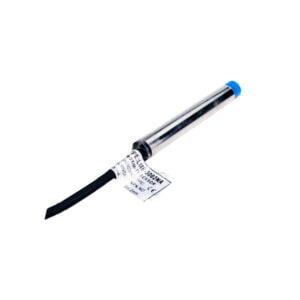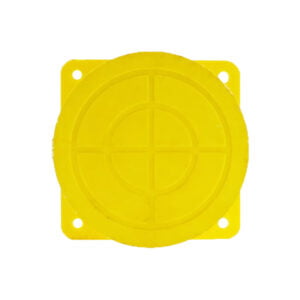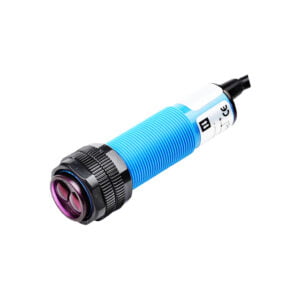Proximity sensors
- Proximity Sensor Manufacturer in China
- Good price&high quality
- OEM&ODM available
- Two years long warranty time
Inductive proximity sensors
The inductive proximity sensor is used to detect metallic objects without directly touching it within its sensing distance, we can produce cylindrical proximity sensors, square proximity sensors, flat inductive proximity switches. The proximity sensor switches housings are made by nickel-plated brass or ABS. The output have PNP, NPN, NO, NC, NO+NC. There are 2 installation methods, they are shieled(flush) and unshielded(non-flush), generally, shieled sensor sensing distance is shorter than unshieled sensor.


Capacitive proximity sensors
Capacitive proximity sensors are designed to detect many different kinds of objects, regardless of whether they are metallic conductors or insulators. This includes materials such as stainless steel, plastic, liquids, and ceramics, among others. Thus, the applications for capacitive proximity sensors are more varied than those for inductive proximity sensors. Therefore, the capacitive proximity sensor price is higher than inductive ones. Also, these sensors divide into shielded and unshielded capacitive proximity switches.
Photoelectric sensors
A photoelectric sensor is a type of electronic device uses light to detect the presence or absence of an object. It is made up of an emitter, that produces a beam of light and a receiver that detects the light and measures its intensity. We are a Chinese photoelectric sensor manufacturer, we can produce 3 kinds, they are diffuse photoelectric sensors, retroreflective photoelectric sensors and through-beam photoelectric sensors. Shapes can be cylindrical, square or slotted.
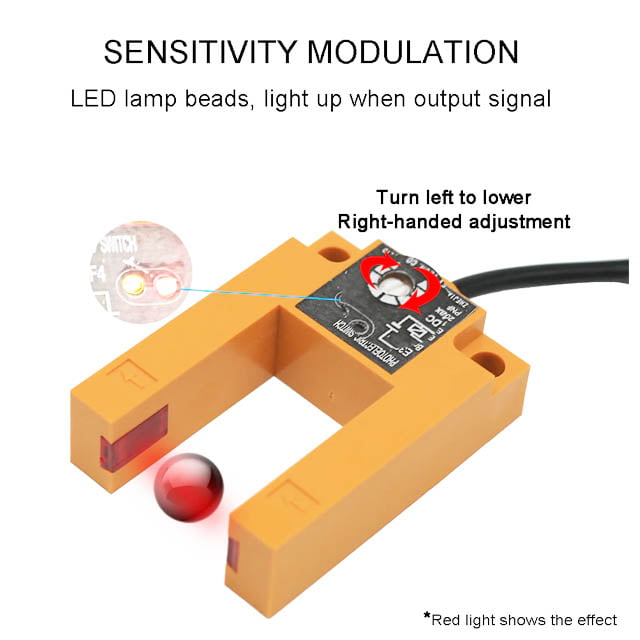

Safety light curtains
Safety light curtains, also known as safety barrier, is a safety device used in industrial applications to protect workers from hazardous machinery. They consist of a series of infrared beams that are emitted across an area where a dangerous machine is operating. If any object or person breaks the beam, the machine will be immediately shut down, preventing any accidents or injuries. Safety light curtains are commonly used in manufacturing, packaging, and other industrial environments.
Fast delivery time
We bear the stock pressure instead of you, our stock level always keep at 100 pieces for each sensor for urgent orders.
100% QC inspected
All of our sensors will be fully tested under our Quality Control Department before out of our factory, to ensure their high quality
Abundant variety
We can produce from miniature sensors to big sizes sensors, upto 500 different sensors available to meet different requirements.
Proximity sensor applications
Proximity switches are extensively used in aeronautics, aerospace, technology, and industrial production. They are also prevalent in daily life applications such as hotels, restaurants, garage doors, and automatic heaters. For matters concerning security, they are often installed in places like data files, accounting offices, financial institutions, museums, and warehouses, usually accompanied by various anti-theft devices. In measurement technology, they are used for measuring length and position. In control technology, they are employed for measuring and controlling displacement, speed, and acceleration.
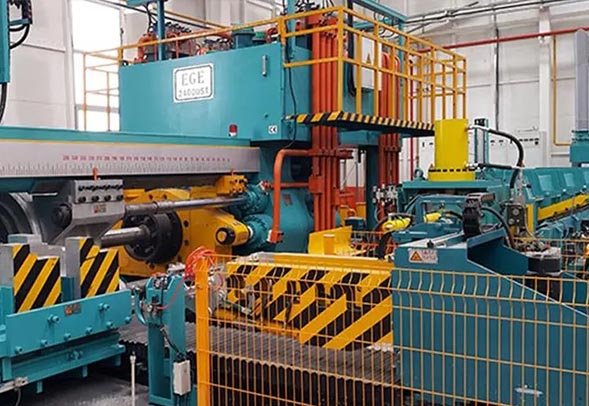
Machinery Industry

Vehicle Reparing

Building Industry
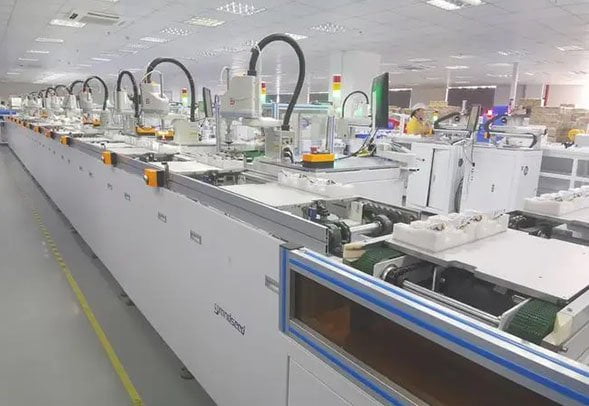
Factory Production line

Printing Industry

Logistic Industry
1. Introduction to Proximity Sensors
The proximity sensor is a very important invention in the field of modern automation and industrial control. It is widely used in many applications, from smartphones to high-precision medical equipment. The first proximity sensor was manufactured by PEPPERL+FUCHS in 1958. A proximity sensor is a non-contact switch that can detect objects without directly touching them. Therefore, it has a long lifetime, fast response time, and does not cause wear to the detected objects. Because of these advantages, it quickly replaced limit switches in the market, which were first found in 1932 by Peter McGall from Freeport, Illinois in the USA.
2. Types of Proximity Sensors
Now you might wonder how many kinds of proximity sensors around the world? I will tell you the answer in following part, please be patient to read.
There are 4 types of proximity sensors according to their detecting materials, working principles differences. They are infrared proximity sensor, inductive sensor, capacitive sensor and ultrasonic proximity sensor.
Infrared sensors, also called photoelectric sensor switches, are often found in mobile phones. They are located next to the earpiece of the mobile phone. When an object is detected to be close, the screen will automatically turn off to prevent the hang-up button from being pressed by mistake. Photoelectric sensors are divided into diffuse photoelectric sensors, mirror reflective photoelectric sensors, and through-beam photoelectric sensors. Their sensing distances gradually increase, but their prices increase as well.
Inductive proximity sensor working principle is using eddy current to detect metallic objects. When a metallic object is close to this sensor, it will cause an eddy current on the metal parts. Hence, the inductive proximity sensor is only used to detect metallic materials such as stainless steel, copper, aluminum, and so on.
The working principle of capacitive proximity sensors is using an RC oscillator to sense objects. When an object is within its sensing range, the capacity of the capacitor increases and the oscillator starts to oscillate. It is used to detect any objects, whether they are conductors, semiconductors, or insulators.
- Ultrasonic sensors convert electric signals to mechanical ultrasonic waves to detect materials. When an object is within its detection range, it changes the mechanical signal into an electric signal. Then it decides to turn on or turn off a load connected to its output terminals. The common applications of ultrasonic sensors are non-destructive testing of metals and thickness measurement.
3.Working Principle of Proximity Sensors
So let me provide you a very short conclusion for the working principles of different proximity sensors. Now let’s start.
Infrared sensors use light to detect objects, inductive proximity sensors use eddy effects for detection, capacitive sensors use oscillator changes to identify if an object is approaching or not. Ultrasonic sensors utilize sound to check the presence of an object.
Due to their different working principles, their applications vary widely.
4.Applications of Proximity Sensors
- Infrared sensors require very strict working environments. The places should be neat, free of dust and oil. As dust and oil will affect the emitting and receiving of an infrared sensor, this might cause the infrared sensor to work abnormally. Therefore, the workplace where the photoelectric switch is installed needs to be cleaned timely. The typical applications are smartphones, automatic hand dryers or automatic soap dispensers, smart door locks, etc.
- The inductive proximity sensor is cheap and can work in harsh environments. We generally use it in many applications, such as metal object movement distance detection, metal products counting, etc.
- Capacitive sensors can detect liquid levels, count running objects, sense powdery materials levels, etc.
- The printing industry often uses ultrasonic sensors to detect paper thickness. Besides, ultrasonic sensors can be used to detect liquid levels, detect transparent objects and materials, control tension, and measure distances, etc.
5.Choosing the Right Proximity Sensor
When choosing the right proximity sensor, there are several points to consider:
- Types of the sensor: As talked about before, choose the infrared proximity sensor, inductive sensor, capacitive sensor, and ultrasonic proximity sensor based on your requirements.
- Shapes: According to the shape differences, the proximity sensor shapes can be cylindrical, square, groove, perforated (through). Choose one of them accordingly.
- Working voltage: The working voltage can be DC6-36V or AC90-250V. Generally, the DC one is a 3 wire proximity sensor, the AC one is 2 wire.
- Detection distance: the detection distance of a proximity sensor can be 1mm to a maximum of 10 meters.
- Output type: The output of a sensor can be PNP+NO, PNP+NC, NPN+NO, NPN+NC, PNP+NO and NC, NPN+NO and NC. Choose the output that you want.
- Cable length: Lorentzzi proximity sensor cable length is standard 2 meters or can be customized according to customer requirements.
Now let me introduce some of the best proximity sensors in the market:
- Omron E2E-X5Y1-US: This is a M18 cylindrical flush type inductive proximity sensor. Its working voltage is 20-264VAC, AC 2 wires, IP67 protection grade, detection distance 5mm, frequency 25Hz.
- Turck Bi2-Q10S-VN6X2/S34: This is a rectangular NPN output inductive proximity sensor. Its working voltage is 10-30VDC, its cable quantity is 4 wires, NO+NC outputs, detection distance 2mm, switching frequency is up to 2kHz.
- Pepperl+Fuchs NJ2-V3-N Inductive Proximity Sensor: This sensor is a NAMUR NC proximity sensor. Its rated operating distance is 2mm, IP67 protection grade, AC 2 wire, working voltage. It has reverse polarity protection.
6.proximtiy sensor wiring diagrams
The proximity sensor wiring diagrams can be divided into 3 kinds according to output difference: 2 wire wiring diagram (sensor, load, and power supply are connected in series), 3 wire proximity sensor wiring diagram (NPN or PNP, output is NO or NC), and 4 wire wiring diagram (NPN type or PNP type, output NO+NC). Please see the below wiring diagrams:

7.FAQs
Yes, the infrared and ultrasonic sensors can detect humans. They are often used in automatic door systems, security systems, and smartphones.
The detection range of a proximity sensor varies depending on its type and design. For instance, ultrasonic sensors can detect objects up to several meters away, while capacitive or inductive sensors typically have a shorter range.
If a proximity sensor is not working, it may fail to detect objects accurately. This can lead to malfunctions in the device or system it’s integrated into, such as a smartphone screen remaining active during calls.

